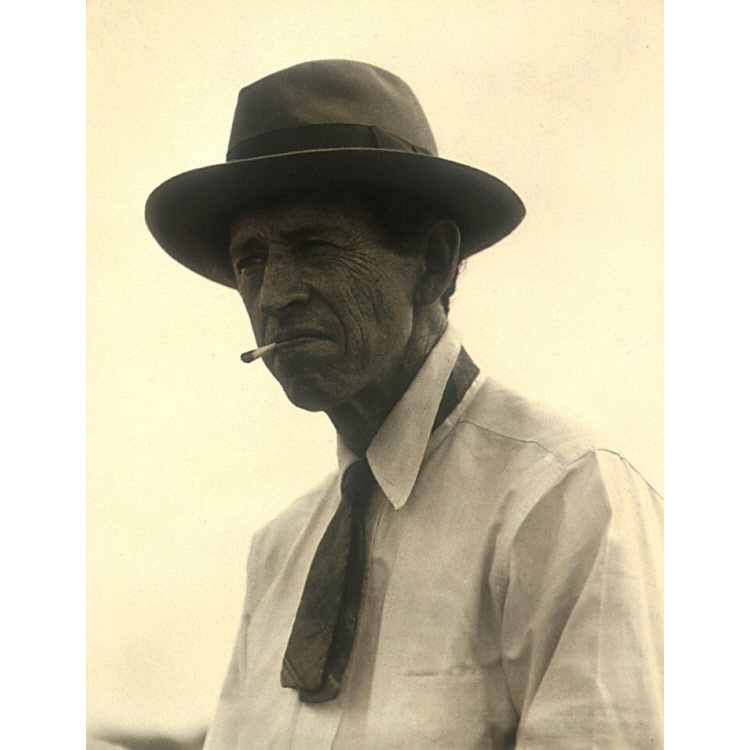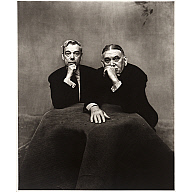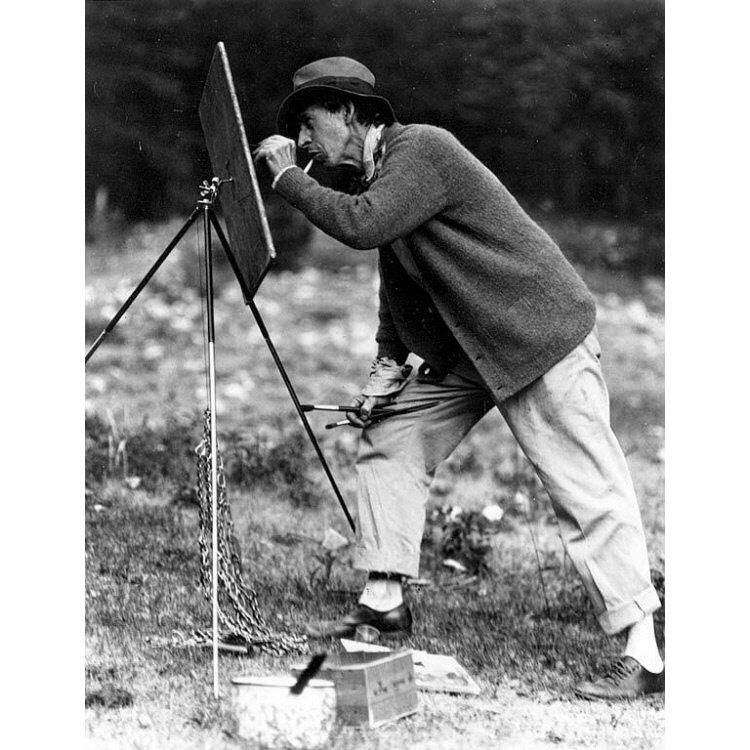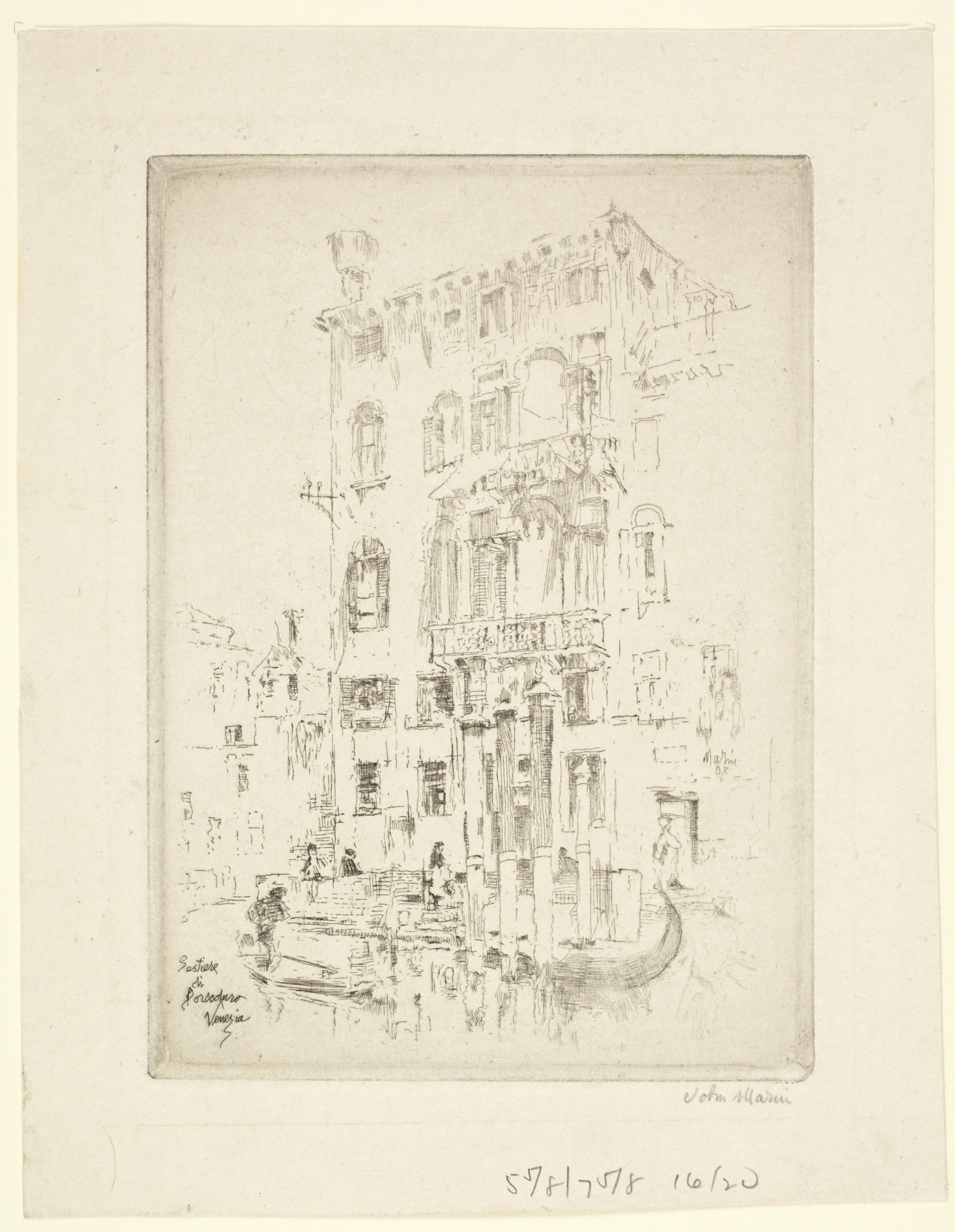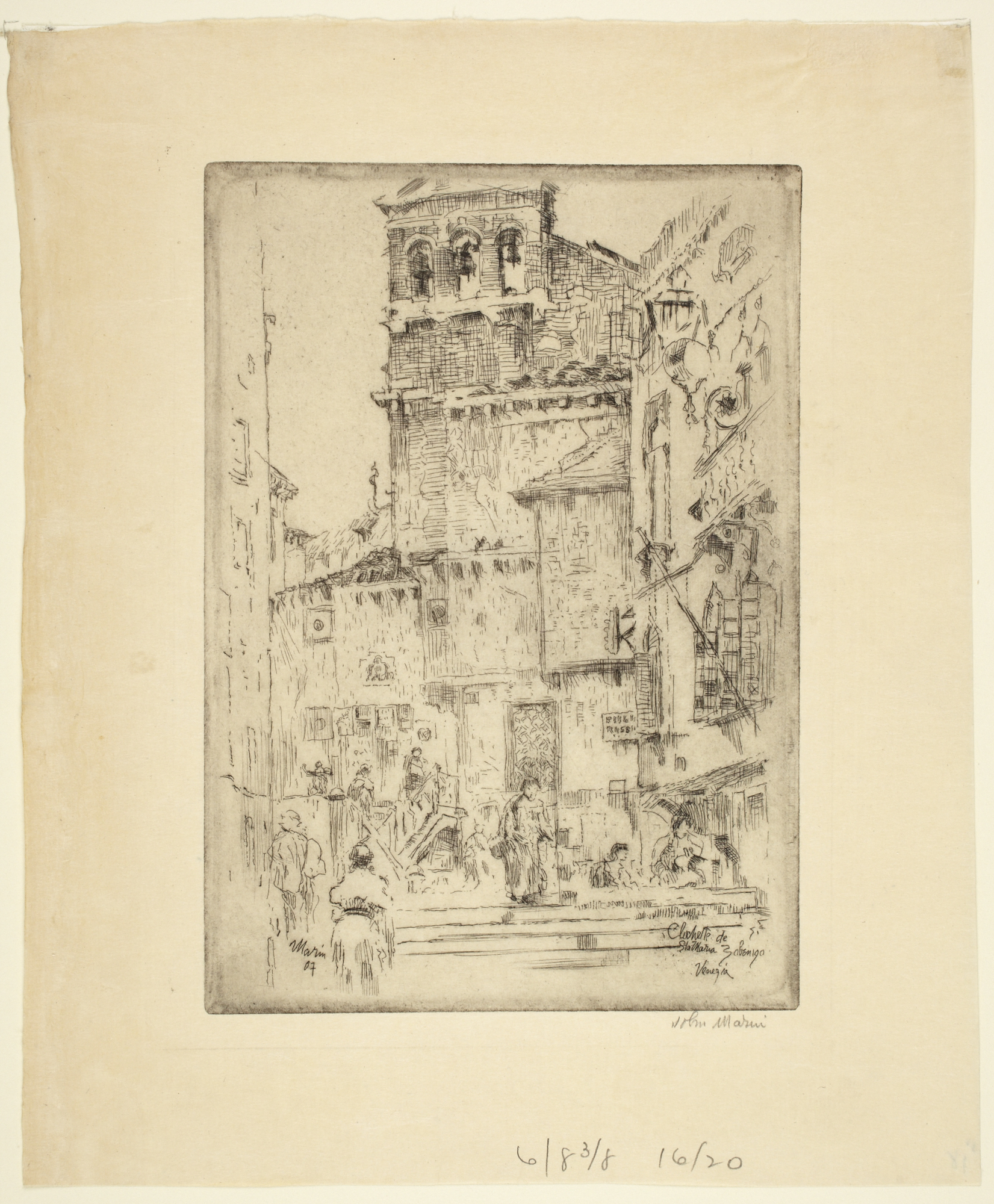John Marin
Marin's career as an artist got off to a slow start: he was almost thirty when he undertook formal art training. He had been a draftsman, however, since his early days while living in New Jersey with the grandparents, aunts, and uncles who raised him after his mother's death. In 1899, after spending six unsuccessful years pursuing a career in architecture, Marin studied for two years at The Pennsylvania Academy of the Fine Arts and a year at the Art Students League, then went to Paris in 1905 for five years. There Edward Steichen saw some of Marin's watercolors, which he showed to Alfred Stieglitz. Stieglitz's exhibition of Marin's work in New York was the beginning of his lifelong role as Marin's dealer and patron, and of Marin's long and acclaimed art career.
Marin considered himself schooled more by nature than by any instructor and generally sketched out-of-doors. From 1914 until his death, he worked part of almost every year in Maine, often finishing the work in New York, or, later, in his winter studio in New Jersey. He bought a house at Cape Split, Maine, in 1934, and a lobster boat in which to reach surrounding islands. There and in the Berkshires and White Mountains, he produced energetic, abstract oils, watercolors, and etchings of the New England scenery he loved.
William H. Truettner and Roger B. Stein, editors, with contributions by Dona Brown, Thomas Andrew Denenberg, Judith K. Maxwell, Stephen Nissenbaum, Bruce Robertson, Roger B. Stein, and William H. Truettner Picturing Old New England: Image and Memory (Washington, D.C.; New Haven, Conn; and London: National Museum of American Art with Yale University Press, 1999
